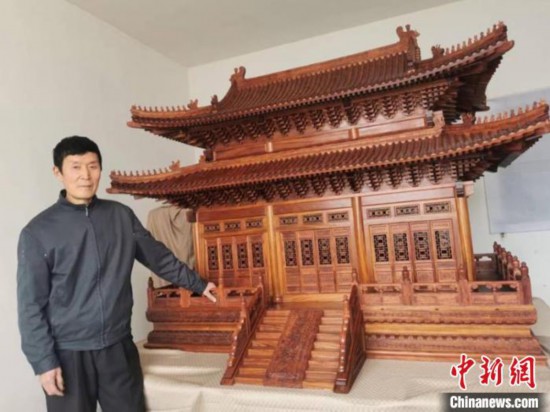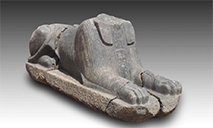Old carpenter makes model of ancient building with traditional woodworking technique
Using an ancient woodworking technique, a 62-year-old carpenter in Jilin city, northeast China’s Jilin Province, recently finished creating a wooden model of a building from the Qing Dynasty (1644-1911).

Photo shows details of a wooden model made in the form of a building from the Qing Dynasty (1644-1911) that was created by Hu Ping. (Chinanews.com/Shi Hongyu)
Hu Ping follows an ancient Chinese mortise and tenon technique, which means no nails are involved in the entire process for making the wooden model, which is 2 meters in length, 1.3 meters in width and 1.65 meters in height. The model also includes doors and windows, all of which can be opened and closed, as well as auspicious animals perched on the ridge of its roof.
Hu said he spent 11 years creating the wooden model. To look for relevant information, examine the ancient buildings, and select proper materials, he visited many places, including Beijing and Datong city in north China’s Shanxi Province, which are known for their ancient buildings.
Having cultivated a fondness for painting and ancient buildings since childhood, he learned woodworking skills from one of his brothers and wood carving techniques from a local master.
In 1980, Hu began to work at a local wood carving factory. He later ran his own wood carving factory, which exported wood carving products to the United States and Europe.
Hu then started to make wooden models of ancient Chinese buildings in 2000. “I have made three models, and the model of the building from the Qing Dynasty is the largest one,” Hu said.
Hu introduced that the model was made from African rosewood, which will make the model take on a more antique appearance as time goes by.

Photo shows Hu Ping and the wooden model he created. (Chinanews.com/Shi Hongyu)
The biggest challenge with the model was its arches, as each arch consists of 60 to 70 pieces of wood, which must be precisely cut, Hu said.
“I hope that more young people can learn the ancient Chinese mortise and tenon technique,” Hu added.
Photos
Related Stories
Copyright © 2022 People's Daily Online. All Rights Reserved.









